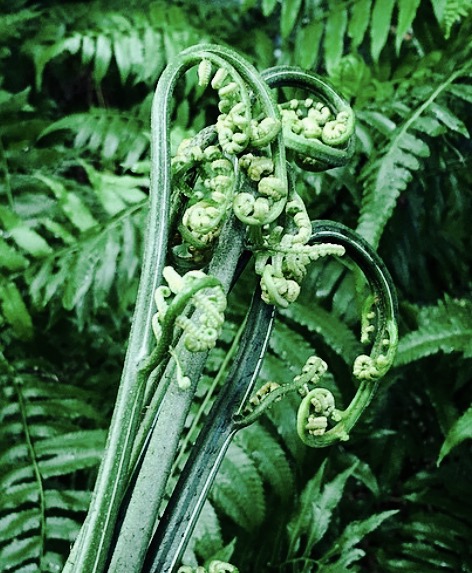Hō‘i‘o: Delicious & Nutritious Fern Shoots
Known as hō‘i‘o in Hawaiian or warabi to the Japanese, pako to the Filipino, kosade to the Koreans, ostrich fern or fiddlehead fern on the mainland, it is delicious and nutritious.
Hō‘i‘o grows in the wet, higher-altitude rain forests of our islands, particularly on the Big Island and Maui.
The fern is very high in iron and fiber, loaded with vitamins A and C and a very good source of omega 3 and omega 6 antioxidants. They retain a dark deep green color even after being cooked and have been compared to tasting similar to okra, green beans or even asparagus.
They retain a dark deep green color even after being cooked and have been compared to okra, green beans or even asparagus.
Pteridium aquilinum is the type that most commonly grows here in Hawai‘i.
It is worth noting that certain varieties of the plant contain the carcinogenic compound Ptaquiloside so it needs to be cooked thoroughly before it is consumed.
Usually cut into bite-sized pieces and blanched, warabi is often seen at parties both big and small in the buffet line served as a salad mixed with kamaboko (Japanese fishcake), dried codfish or dried opae (shrimp), konbu (seaweed), onions, tomato and soy sauce or sesame-based sauces.
Some chefs as well as many home cooks have ventured off the beaten path and pushed this ingredient to its limit by creating some delicious dishes that leave you wanting to lick your plate.
The ferns can be used to stir-fry with your favorite protein or used to create an amazingly delicious soup.
Hō‘i‘o holds up great in vinegar-based pickling or even Korean kimchee-style pickling techniques.
It is a great substitute for asparagus wrapped in bacon and grilled on the hibachi at your next barbecue.
Just remember that it is thinner, so you will need to wrap three or four stalks in bacon compared to the individual stalk of asparagus.
While there may be many different varieties of this fern, it is worth noting that the local culinary world here will argue that the hō‘i‘o is more tender and succulent than other varieties, attributing the difference to our tropical climate and year-round rainfall.
You’ll probably be able to find some of these at your local grocery store or even at some farmers markets throughout the island. But, going out and gathering it is still the preferred way.
The beginner might have a problem finding someone to take them to the secret spots, as most locals guard the locations of their favorite hō‘i‘o patch just as heavily as they guard the locations of their secret fishing holes.
Sponsored Content
Comments














